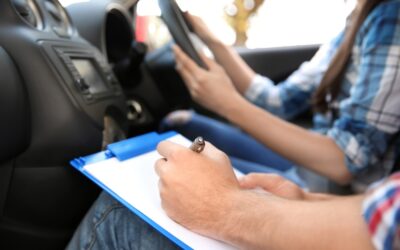You are likely to feel nervous on your first driving lesson. This is quite natural and is in fact a good thing. Those learner drivers who are over-confident, or feel they know everything could be in for a nasty shock when they attempt to drive to the standards expected by the DVLA. Most importantly, a few nerves will heighten your alertness, and make you more focussed.
To help keep your nerves in check, let’s have a look at a few things you could expect on your first driving lesson:
The vehicle and instructor
 All professional driving schools have dual control cars. This means, especially during the early stages of learning, you can be assured that if something goes wrong, the instructor can keep you safe even though you are behind the wheel.
All professional driving schools have dual control cars. This means, especially during the early stages of learning, you can be assured that if something goes wrong, the instructor can keep you safe even though you are behind the wheel.
Your instructor will be an expert in helping you handle your nerves. They will get to know you so they can understand what you are capable of achieving in each lesson. They will not rush you in any way as they are aware that the way for you to make progress is to move forward at your own pace. Your instructor will take you to the next level once they recognise that you are confident to continue. Your instructor’s job is to teach you and to keep you safe.
First things first
The first thing the instructor will do is check that you are legal to drive, so he will need to see your provisional license. If you do not yet have a provisional licence you can acquire one online here. Your first lessons need to take place on quiet, even isolated roads, so it is unlikely your first lesson will begin from outside your door. The instructor will drive to an acceptable place where you can learn the fundamentals of the car controls safely.
Welcome to the driver’s seat
Once you are in the driver’s seat, the instructor will introduce you to the main instruments on the dashboard and the equipment at hand which you will be using frequently. This is called the “cockpit drill” and includes explanation of the rear view mirror, the gears, the three pedals (accelerator, clutch and brake), the blind spot and of course the handbrake. This will take about 30 minutes of your first lesson. Of course, if you a quick learner, or already have a good comprehension of a car on your first lesson, you could be doing three point turns, emergency stops and parallel parking before the end of the session.
Moving off and stopping
Yes, it is likely you will be driving on your first lesson. How long you have for this will be dependent on how quickly you understand and feel comfortable with the controls. The instructor will move forward at the pace your progress demands. You will learn the checks you need to make before starting a journey and how to turn on and move into the flow of traffic safely as well as stopping the vehicle. This whole procedure will include processes which you may struggle with at first (pulling away; using the gears correctly; and pulling in close to the kerb) but as the lessons progress you will find everything eventually falls into place.
Your lessons should be an enjoyable experience if paced well. An instructor will teach you most effectively when they understand your needs, so tell them how you are feeling, if things are going too fast, or if there is something you don’t understand.
And remember, if you are planning to practise in your own car between lessons with an experienced driver over the age of 25 then you will need to make sure you have learner driver insurance. Why not get a quote from us today.



